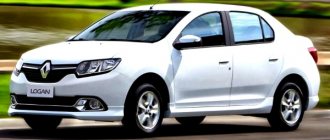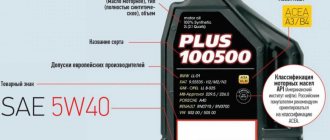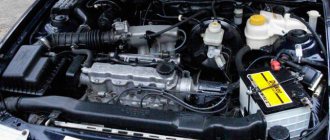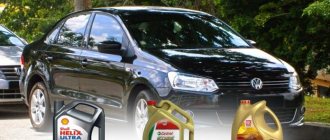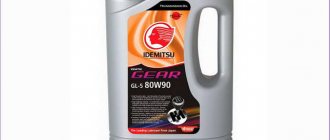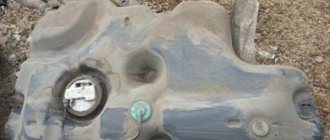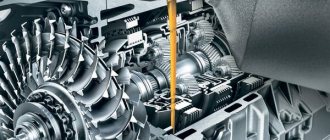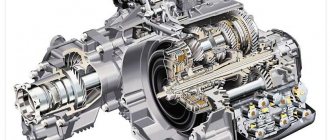| Place | Name | Characteristics in the rating |
| Best synthetic oil |
| 1 | ELF EVOLUTION 900 NF 5W-40 | The best oil. Recommended by the manufacturer |
| 2 | Motul 8100 Eco-clean 5W-30 | Guaranteed wear prevention |
| 3 | NESTE OIL 5W-30 | The most reliable start in cold weather |
| 4 | LIQUI MOLY Optimal Synth 5W-30 | Protection against low-quality fuel |
| 5 | Lukoil Luxe Synthetic 5W-30 | Best price in category |
| The best semi-synthetic oil |
| 1 | LIQUI MOLY Top Tec 4100 5W-40 | The most environmentally friendly oil |
| 2 | Castrol MAGNATEC 10W-40 | The best protection for friction pairs |
| 3 | TEXACO Havoline Extra 10W-40 | The most durable lubricant |
| 4 | Ravenol SVE Standard Viscosity Ester Oil SAE 5W-30 | The best choice for a worn out engine |
| 5 | ZIC X5 5W-30 | The best combination of price and quality |
Which products to prefer?
First, let's look at which oil, recommended by the manufacturer, is best suited for use in domestic conditions. Let's start with the fact that the recommended ELF lubricant is also a French brand. 5w30 products are characterized by energy-saving properties, as evidenced by the corresponding sticker on the packaging.
It is most suitable for those power units that are not equipped with a turbine, have not been boosted and have not been used at all, or have a short service life. It is for these cases that oil with low viscosity at high temperatures is ideal. This type of engine oil provides a thin oil film, but for new engines this is enough, but it helps reduce fuel consumption.
But fairly worn engines are characterized by larger gaps that must be carefully filled, and for this the best oil is the one that is thicker. What should it be? The optimal solution would be the 5w-40 grade, which is recommended for use in used motors, boosted and diesel engines. It is for these purposes that you will need a lubricant that has low viscosity at high temperatures. It is thanks to the increased viscosity that the oil film does not break, which allows you to slightly save the amount of oil consumed by the engine.
Algorithm for replacement in a 1.6-liter Logan unit
- Unscrew the plug on the neck to fill the lubricant.
- Under the crankcase of the Renault Logan engine version 1.4 and, accordingly, 1.6, we substitute a container of suitable volume to collect the “working off”.
- We remove the plastic crankcase protective plate (on “8-valve” engines you don’t have to dismantle the protection, since it has a technological cutout for the drain plug).
- Unscrew the drain plug on the pan (with a square key set to “9”).
- We wait until the lubricant is completely drained.
- During this time, unscrew the housing of the old filter element (use a puller or other available means: a screwdriver, part of an emery sheet, etc.).
- Before installing a new element on Renault Logan, lubricate its rubber ring with “fresh” oil.
- We install the filter by screwing its housing onto the mounting threaded channel in the motor using hand force.
- Don't forget to install the sealing washer on the drain plug (consumable code - 1026 5505R).
- Fill in new lubricant.
- The liquid level position should be slightly below the mark marked on the dipstick.
- We tighten the filler plug on the valve cover.
- We start the engine and let it run for 5-6 minutes.
- We turn it off and wait 15-20 minutes.
- We control the level - it should be between o - “MAX”.
- We inspect the locations of the filter housing and drain plug and make sure there are no leaks.
- In order to correctly control the quality of lubricant in the Renault Logan engine, you should note the mileage at which this process was performed.
Tips and tricks for filling oil
It is necessary to take into account such a moment as the mileage of the car. If we are talking about quick repairs, including major ones, then the use of mineral or semi-synthetic bases is allowed. True, in the pre-repair period, not earlier. As the experts say, in the last month of operation you can no longer harm the engine.
Allowing the technical condition of a car to reach this level is a sign of poor care on the part of the owner. In most cases, such situations are regarded as the exception rather than the rule. In order to increase the service life of the car or not significantly reduce it, it is recommended to carry out a technical inspection and refill with high-quality, original oil.
Recommendations from the factory or advice from the people?
The plant recommends products of its own sub-brand ELF. The picture shows a 16-valve Renault Logan engine; it requires more engine oil than its 8-valve counterparts
If you carefully read the manual from the manufacturer, it will be clear that for warranty and post-warranty service of Logan you need to purchase and fill in ElF brand oil (ELF Evolution SXR 5W40 Oil or ELF Evolution SXR 5W30 Oil).
The oil change in the Renault Logan engine should be done every 15,000 km or every year (whichever comes first).
Typically, oil changes are carried out together with:
- replacing the air filter;
- checking the condition of the spark plugs;
- checking the fuel filter (the fuel filter is installed in different places depending on the year of manufacture of the car);
- checking the condition of high-voltage wires.
For engines K7J and K7M (1.4 and 1.6 liters respectively, 8 valves) - 3.4 liters are required.
For the K4M engine - (1.6 liters, 16 valves) - 4.8 liters are required.
What do Loganovods think?
Logan industry experts do not unanimously agree on replacing the recommended oil with analogues. Since the price of some is high, the quality of others is poor, and the income of all people is different. However, a good half agree on one thing: you only need to fill Renault Logan with what the manufacturer recommended.
Viscosity index, what is the difference?
When buying oil, you probably paid attention to the numbers indicating the viscosity index, but you can see what they mean in this table:
| Ambient temperature up to °C | — 30 | -25 | -20 | -15 and warmer. |
| Viscosity index marking | 0w30 0w40 | 5w30 5w40 | 10w30 10w40 10w50 | 15w40 15w50 |
Now that you know such nuances in choosing engine oil, giving preference to the best of those on the market will not be difficult.
A few words about filters
The oil filter is not a part you should skimp on!
Original oil filter for Renault Logan 1.4 8 valves
According to the editors’ experience, it is better to overpay for an original filter than to ruin good oil when a low-quality filter stops doing its job. According to Loganovodov’s experience, the replacements (analogs) performed well: Filtron, Mann, Goodwill, Fram.
How to choose engine oil for Renault Logan
Renault Logan cars are the most popular foreign cars in Russia recently. This is due both to a fairly good price-quality ratio and to their efficiency and unpretentiousness.
- Based on the warranty program provided by Renault, service, which includes an oil change, is done after reaching mileage of 15,000, 30,000, 45,000, 75,000 and 105,000 kilometers, or after reaching a year of operation (the warranty period provided by the company is three years ).
- Looking at the recommendations of the Renault company, branded service centers use ELF Evolution SRX 5w30 and 5w40 motor oils (although the service can sometimes use another brand).
- In the case when the service independently uses oil of a different brand, this is not reflected in the warranty, but in the case when the initiative comes from the owner of the car, a special note is made in the service book and, when a warranty case occurs, difficulties with warranty repairs may arise.
- Mechanisms wear out over three different periods: • Rubbing parts wear into one another. During this period there is increased wear • Parts wear out slowly over a long period of time
- • Wear with increased progression due to the end of the engine's service life.
- The oil recommended by the manufacturer (ELF Evolution SRX 5w30) is classified according to the ACEA system as A1B1, characterized as energy-saving (if the canister has the inscription “Full Economy”).
This oil is mainly intended for those engines that have not been boosted and do not have turbocharging and require the use of oils with a low viscosity index at high temperatures. The oil film of such oils is very thin, which allows them to be used with new internal combustion engines, allowing them to reduce fuel consumption.
For worn-out engines, oil of greater thickness is required, which will compensate for the increasing gaps in the friction pairs.
Oil marked 5w40 corresponds to ACEA classification A3B4, as a result of which it is recommended for use in boosted gasoline and supercharged diesel engines, with which it is recommended to use oil with low viscosity at high temperatures, which is compensated by a high shear rate. The viscosity of such oils is higher, and this does not allow the oil film to break in heavily loaded friction pairs of engines of this type. Prices for oil of this brand start at 1,500 rubles per container. In addition, ELF brand oils are used, but without the “evolution” designation. This oil has a price of 450 rubles per liter.
From this it follows that oils of this brand (by the way, they are made in France) can be found by customers with a wide range of incomes.
The owners of cars of this brand themselves say in their reviews that in addition to the factory one, other oils can be used. Here, for example, is what one of them says: - although the manufacturer recommends ELF 0w30, 5w30, 5w40 oils, changing them after 15 thousand kilometers, it is advisable to change the oil every 10,000 kilometers.
In this case, you can use Mobil Super 3000X1 5w40 oil. Some believe that the Renault Logan engine will accept any oil from 0w30 to 5w40, as long as this oil has the Renault RN0700 approval. Other Renault Logan owners use Elf Excelium NF 5w40 oil and are quite satisfied with it.
For cold regions (such as Siberia), it is desirable to use oil (synthetic) from almost any manufacturer with a rating from 0w30 to 0w50. There are also Renault Logan owners who use Mannol 5w40 oil all year round and say that everything is fine with them. Here are reviews from several more owners of these cars: - I use Total Quartz oil.
Moreover, I used it with all the cars I owned, and there were no problems. I have never used “branded” oils and do not recommend them to anyone: automakers do not produce their own oils, but negotiate with auto chemical manufacturers (and one can only guess about the quality of their products).
— There’s no point in using expensive oils (they won’t save the situation anyway) - this is the wrong approach. It is necessary to use oil that is suitable for severe conditions and change it more often. For example, you can use the most ordinary LukOil with the necessary approval, changing it after 5 thousand kilometers - and the engine will be preserved much better.
Sometimes you can also use oils like Liqui Molly Superlehlauf 10w40: when using this type of oil, there is no carbon deposits on the valves and there is always good starting at low temperatures
However, if you follow the instructions of the manufacturer, which states that you must use only ELF oils (and the company will never give bad advice), then the maintenance-free mileage will be maximum and these oils are not very expensive in price. The main thing, in this case, is not to run into a fake, of which there are now quite a few on the car accessories market.
Note!
One thing to remember is that the oil change for Renault Logan should be done with one that has already been filled or another with similar characteristics and properties. Incorrectly selected oil can leave carbon deposits inside the engine, which will lead to timing belt breakage and major repairs. The cost of repairs for 16-valve engines will be more expensive than for 8-valve engines, take this into account when choosing a car.
In other cases, if nothing is known about the origin of the old oil, the engine should be flushed with special detergents. By following these simple rules and recommendations, the motor will last a long time.
Choosing oil for Renault Logan, which is better to pour 5w30 or 5w40?
Regular vehicle maintenance, guarantee of durability of all systems and assemblies. The operation of changing engine oil is one of the most important processes that must be performed regularly. To replace a Renault Logan on your own, you only need a small amount of knowledge and consistency in the work process. You will learn more about everything in our article, and the process of changing engine oil will no longer be a taboo topic for servicing a car with your own hands.
Transmission oil
Owners of a Logan with an automatic transmission are lucky; the transmission uses a fluid that will last for the entire period of operation of the transmission. Accordingly, the user only needs to periodically check the liquid level in the machine.
In mechanics, oil must be changed every 60 thousand kilometers. Traditionally, the original for Renault is ELF oil, the specific fluid model is Tranself-NFJ (75W80) . As analogues, you can consider oil of the same characteristics. Specific examples include Liqui Moly Getriebeoil GL5 (75W80) or Castrol Syntrans VFE (75W80) . Shell and Motul also have good suitable oils .
Logan comes with several mechanical options, so the oil volume in them will also be different:
- boxes JH1 and JH3 - 2.8 liters;
- JR5 - 2.5 liters.
Lubricant selection
You can pour any liquid into the Renault Logan power unit, but not every liquid will be beneficial. At this stage, inexperienced car owners often make the mistake of filling in the cheapest oil. Users also often save on maintenance. Lubrication recommendations can be obtained by reading the instructions, which suggest 5W40 or 30.
Good to know: 5w20 or 5w30, what is the difference? | Motor oil 5w20 or 5w30, which is better?
The base is exclusively synthetic, regardless of the engine. Experienced car enthusiasts fill it “by eye”, despite the operating instructions. According to the existing regulations, for a 1.6 liter unit the capacity is 4.8 liters. Excess or underfilling entails negative consequences for the engine and leads to the need for major repairs.
How to check the lubricant level
To check the engine lubricant level, you will need a rag. Sequencing:
- Place the machine on a flat surface without a slope.
- Warm up the engine.
- Turn off the engine.
- Wait 8-12 minutes for the glass to lubricate into the pan.
- Take out the dipstick and wipe it with a rag.
- Lower the dipstick back for 2-3 seconds.
The oil level should be between the “min” and “max” marks. A lack of friction fluid can contribute to increased engine wear and overheating. In severe cases, engine jamming is possible. Exceeding the lubricant level can lead to squeezing out the unit seals.
